Opening Hours
The Hofmark Museum is open daily from 12 a.m. to 6 p.m.
Reservations and requests for special guided tours can be made on the following telephone number: +49 (0)9442 91870
Entry prices:
Adults:
Over 15 years of age: € 4.00
Children:
6 to 14 years of age: € 2.00
Under 6 yrs: free
Group guided tours for between 10 and a maximum of 20 people at any time upon request.
The museum is on the 1st floor and can only be accessed via the staircase.
Contact:
Obereggersberg 18
93339 Riedenburg
Telefon +49 (0)9442 - 99 11 278
Telefax: +49 (0)9442 - 99 11 279
This email address is being protected from spambots. You need JavaScript enabled to view it.
www.hofmark-eggersberg.de
Foundation Hofmarkmuseum
Would you like to help give past a future too?
Would you like to be involved in securing, developing and refining the educational aspects of the Hofmark Museum? That's wonderful! Become a member of the Friends of the Dr. Robert Weigand - Eggersberg Castle Cultural Foundation.
Please contact the Chair of the Friends Association:
Dr. phil. Alfred Leurpendeur
Münchener Str. 83
D-85051 Ingolstadt
Tel.: +49 (0)841 881 97221 Fax: +49 (0)841 971 4714
email: This email address is being protected from spambots. You need JavaScript enabled to view it.
Alternatively you can download the declaration of accession here: Download declaration of accession
Dr. Robert Weigand
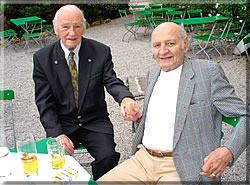
Dr. Robert F.E. Weigand, doctor of canon and civil law, (founder and honorary chairman of the German Castles Association (DBV) State Committee for Bavaria, founding member of the Bavarian State Monuments Council among other things), who dedicated his entire life to the tireless development of a variety of well-organised collections, acquired Eggersberg Castle in 1962 and opened it up to the public by establishing a small hotel and restaurant as well as the Hofmark Museum.
He was the founder and initiator of the non-profit Dr. Robert Weigand - Eggersberg Castle Cultural Foundation. Dr. Robert Weigand donated all of the - in some cases - unique and highly significant exhibits in January 2004 to his non-profit foundation, and established the Hofmark Museum for the general public. The small, but truly excellent Hofmark Museum offers high quality, interesting and knowledge-enhancing visits to those interested in culture.
Would you like to help give the past a future too?
Would you like to be involved in securing, developing and refining the educational aspects of the Hofmark Museum? That's wonderful!
Become a member of the Friends of the Dr. Robert Weigand - Eggersberg Castle Cultural Foundation.
Hippologica
The Horse in Art
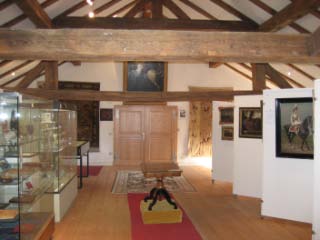
The "Hippologica" collection impressively exhibits depictions of the horse in wood carving, painting, flat and knotted weaving, as tools of war, and in wood, clay, ivory and metal, among many others.
This unique collection encompasses early depictions from Luristan (1800 BC) as well as modern art from the Czech Republic.
We recommend that you take a guided tour of this room.
Small Antiquities
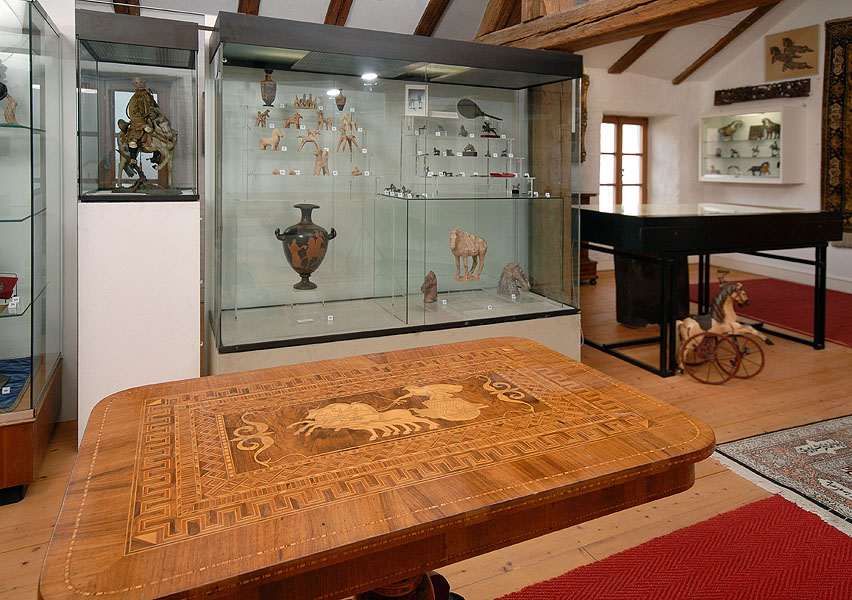
Smaller, but no less important, is the collection of "small antiquities", which exhibits 2000 year-old Roman crockery, so-called "terra sigillata", typical everyday art and Greek illustrations.
Eggersberg Art
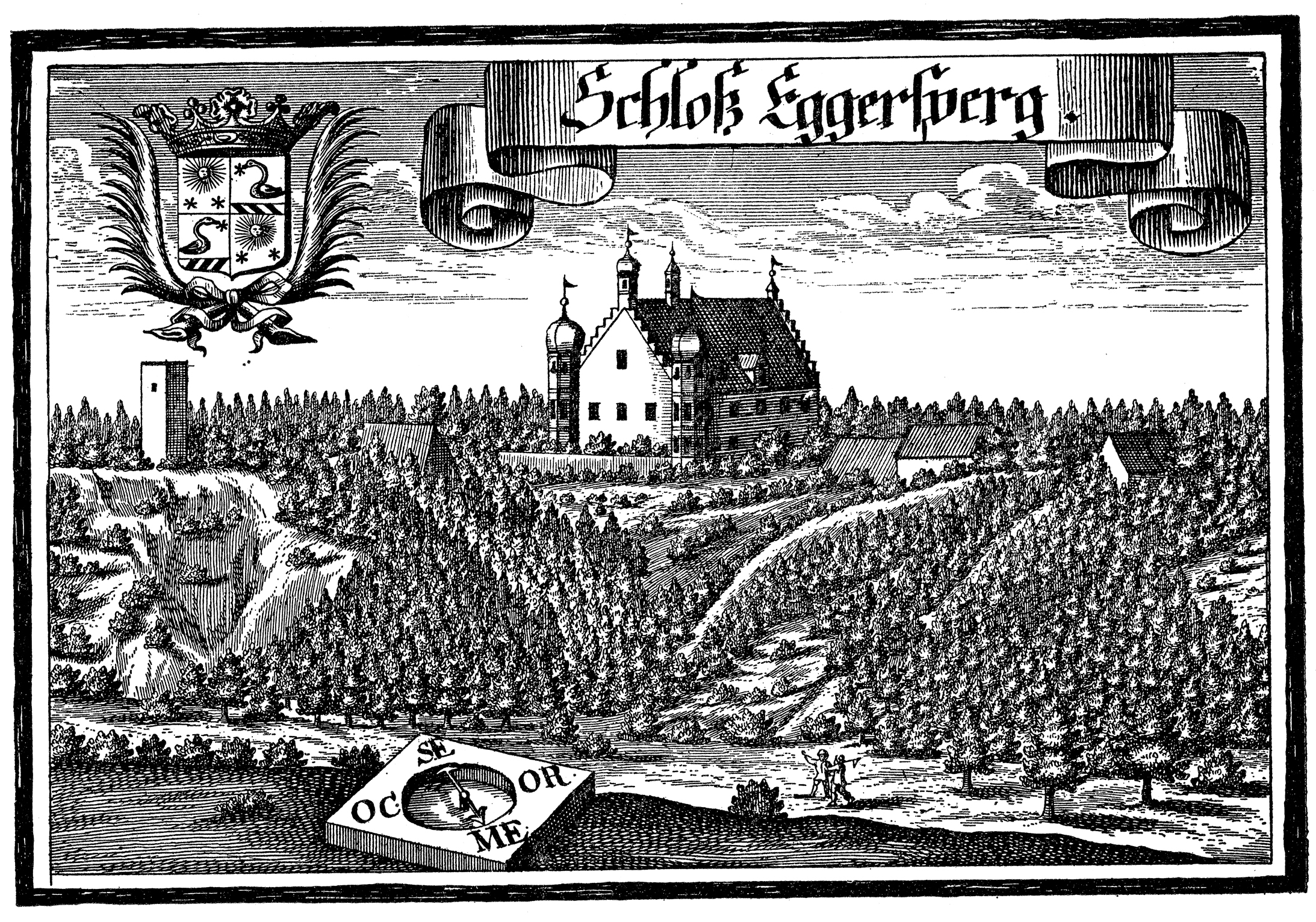 copper engraving of Wening
copper engraving of Wening
Hugest Celtic Belt
Celtic Grave
In the course of the construction of the Rhine-Main-Danube Canal between 1986 and 1991, a significant burial ground from the Hallstatt period (8th - 6th centuries BC) was discovered below Eggersberg Castle, and excavated and scientifically documented.
Evidence was found in 95 graves of a total of 127 bodies that were interred there over the course of 200 years. The graves were chamber tombs from 3sqm to 40sqm in size, which were surrounded by stone circles and covered with a mound. In addition to inhumation graves for bodies, there were also cremation graves, which were reserved for the lower orders or serfs.

Two of the graves contained parts of a cart. In the Iron Age horses were accorded a great deal of importance as mounts; in several graves there was evidence of bridles from horses' harnesses. Horse harnesses and carts only occur in the case of burials of adult males, but in some cases women too were buried very elaborately: in grave 57 there was a splendidly apparelled woman, perhaps the daughter or wife of a Celtic chieftain or clan leader. In addition to high quality ceramics, which were found in every tomb, her jewellery included a small, pure gold hair ring, two rare decorative plate brooches used for fastening her garments, bronze melon arm bands, bronze chokers and a bronze, 1.31 metre-long and 15 cm wide belt plate, the longest Celtic bronze belt preserved in a single piece in the world.
Some of these finds from the Untereggersberg burial ground can be viewed in the Hofmark Museum at Eggersberg Castle.
Lineage "De Bassus"
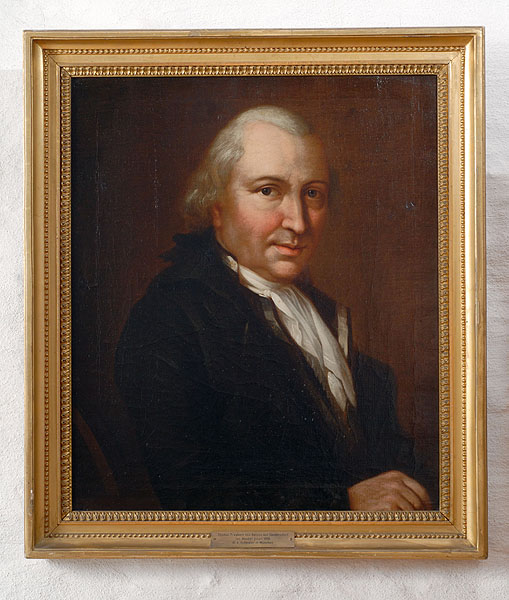
The de Bassus family, whose ancestral seat in Bavaria was Sandersdorf Castle in Altmannstein (now the property of the Wittelsbacher Ausgleichfonds), came from Graubünden canton in Switzerland (Val Poschiavo). The Ingolstadt jurist, Professor Dr. Domenicus de Bassus, doctor of canon and civil law, acquired the Eggersberg, Untereggersberg, Thann, Georgenbuch, Harlanden and Tachenstein Hofmarks from the bankrupt estate of the Dachau steward and court counsellor, Peter Jocher zu Egersperg, in 1684, at a cost of 16,000 florins.
The de Bassus were a highly respected bourgeois family that, as ministers, succeeded in attaining the status of Freiherr (or baron) in Bavaria through Thomas Ferdinand Maria de Bassus. Thomas, baron de Bassus was a particularly noteworthy man. Elected six times as chief magistrate in Graubünden, he also acquired great wealth in Bavaria. He was a true patron of the arts, discovered the Altmannstein carver, Ignaz Günter, and also the composer, Johann Simon Mayr, who was celebrated in Bergamo and was the most prolific, famous composer of the entire Rococo period - including as Donizetti's teacher.
Through the Ingolstadt native, Adam Weishaupt, he came into contact with the infamous order of the "ILLUMINATI" and, with Adolph Franz Friedrich Ludwig, Baron von Knigge (born 16 October 1752 in Bredenbeck) was a long-time member of its leadership, until the order eventually fell from grace with the dukes and was dissolved. The ILLUMINATI, who are often incorrectly described in today's literature, were an order dedicated to enlightenment, education, science and the development of humankind, which had many famous members, such as Johann Wolfgang von Goethe, among others.
Giovanni Maria, Baron de Bassus, son of Thomas, was president of the Neuburg appellate court and married to Countess Sayn-Wittgenstein-Vallendar-Hohenstein. The couple had 6 children. The book by Massimo Lardi, "Baron de Bassus and the Illuminati" is well worth reading.
In 1947 the Eggersberg Hofmark was sold, thus ending the history of the de Bassus family in Eggersberg.
Smallest Saurian
Prehistory of the Altmühl Valley
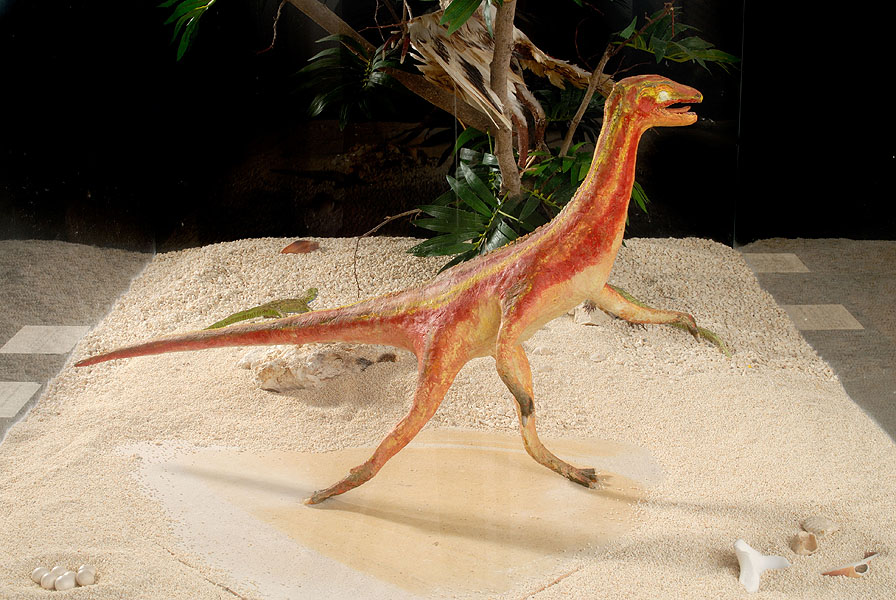
All animal models that can be seen in the glass case were produced on the basis of scientific findings by the palaeontologist Professor Erwin Rutte. The "bird" is the very first attempt at depicting in model form the oldest found "original bird", the Archaeopteryx, which was uncovered in the Jachenhausen quarry in 1861 by Hermann von Meyer.
Compsognathus longipes - "the elegant jaw with the long legs", was the smallest known meat-eating dinosaur. This skeleton, of which only two examples exist, was also found in the Jachenhausen quarry in 1858 by Josef Oberndorfer, whilst the second was found in southern France.
The flying dinosaurs - likewise built in model form by Professor Rutte - also come from Jachenhausen. Professor Rutte, who was a hobby pilot, always joked that "According to all understanding of aeronautics, these dinosaurs could not have flown at all. But they didn't know that, and so they just flew...!"
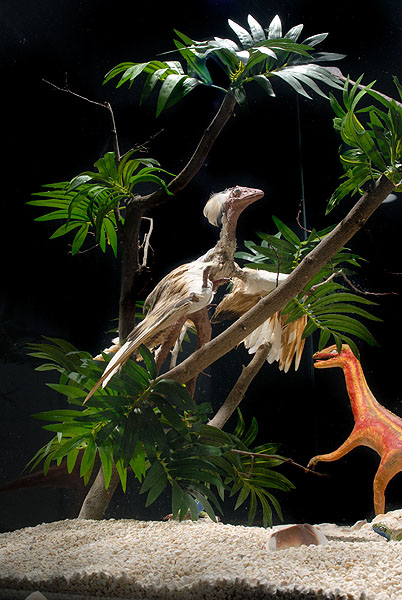
Hofmark

The term "Hofmark" is derived from the legal structures of the Duchy of Bavaria
It describes the smallest administrative unit in which what was known as the lower (or simple) jurisdiction was applied. The term "Hofmark" came into use around the mid-12th century.
There were two different forms of Hofmark, the "closed" and the "open". In a closed Hofmark, even members of other jurisdictions were subordinated to the lord of the Hofmark, whilst in an open Hofmark, the jurisdiction of a person's actual lord prevailed. The Eggersberg Hofmark, with its divisions of Thann, Harlanden, Georgenbuch, Oberhofen, Untereggersberg and Tachenstein was a closed Hofmark, whose next-highest court in those days was the regional court.
At the beginning of the 19th century, the "patrimonial courts" were created from the Hofmarks.
The lords of the Hofmark that ruled for the longest in Eggersberg were the barons de Bassus, who sat in Eggersberg from 1684 to 1947. The revolution in Bavaria in 1848 saw the abolition of the power and privileges of the lords of the Hofmark.

